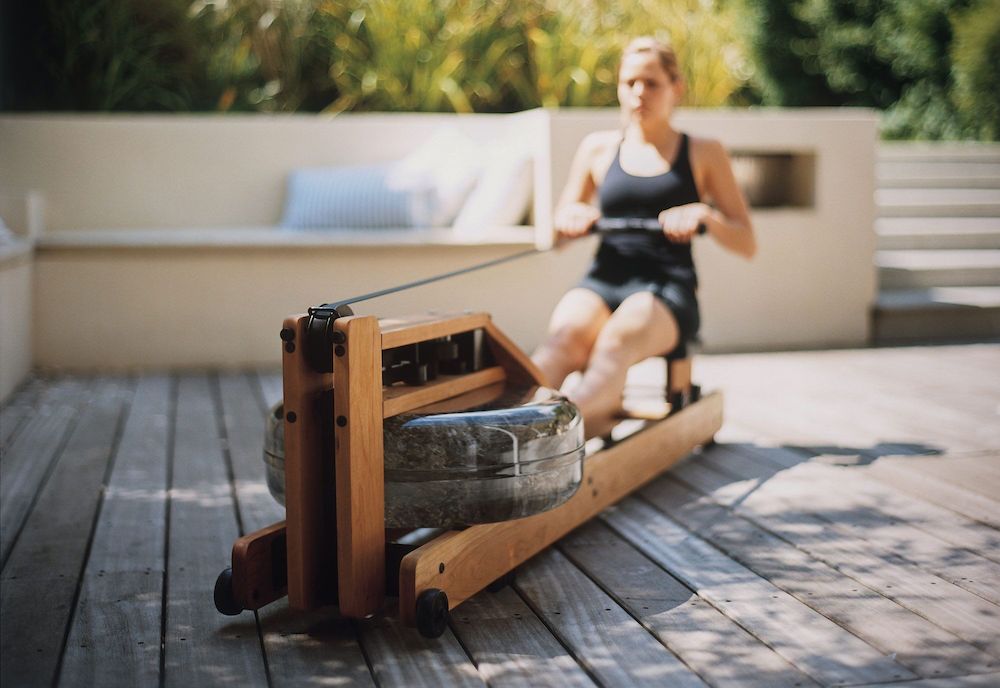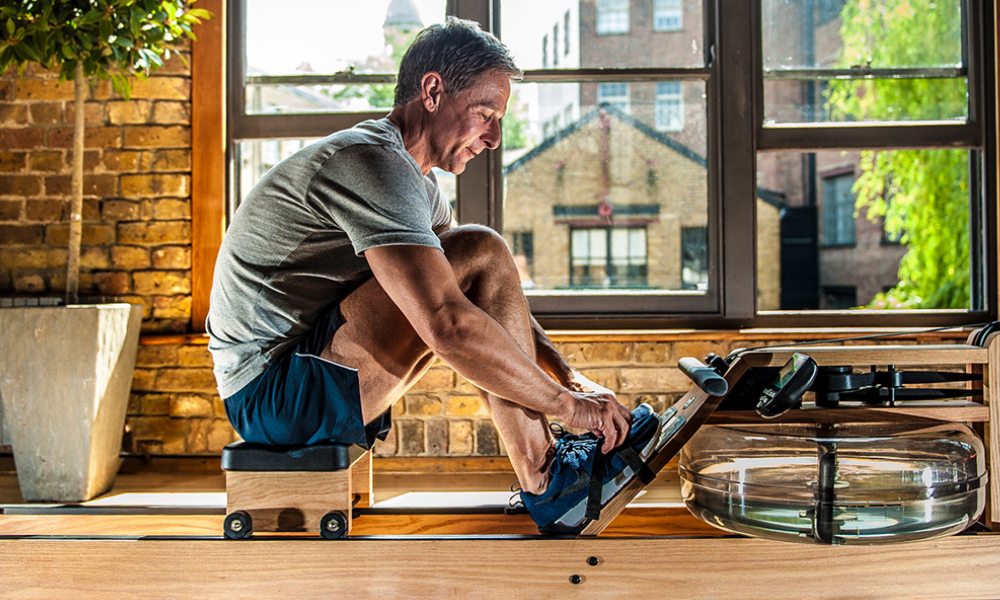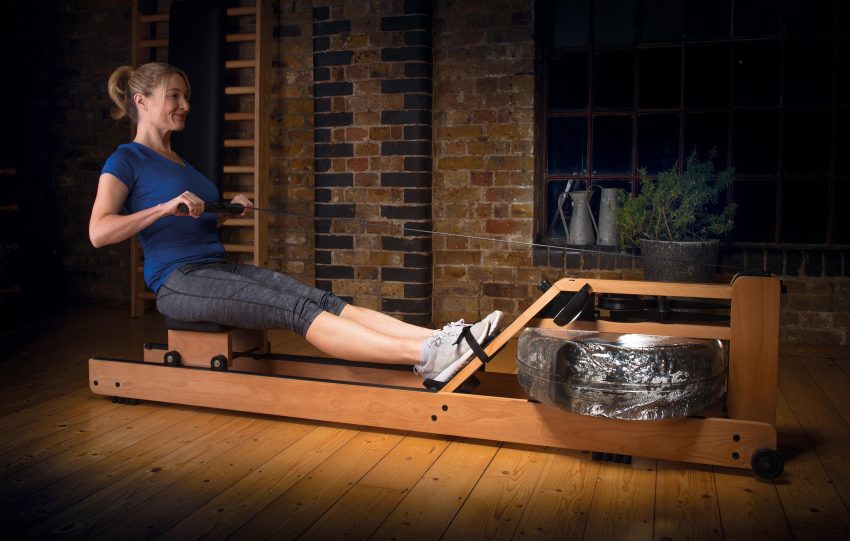As someone who’s passionate about keeping fit and who’s tried a multitude of exercise equipment, nothing quite matches the uniqueness of the rowing machine.
A rowing machine is an impressive piece of fitness gear designed to simulate the actual process of rowing a boat.
If you’re looking to get a full-body, low-impact workout that targets every major muscle group, the rowing machine is for you. And when it comes to a truly immersive rowing experience, water rowers take the cake.
Water rowers have always intrigued me. They beautifully combine functionality with aesthetic appeal and bring the tranquillity of a rowing experience right into your living room or home gym. In this blog post, I’ll delve deeper into the distinctive features and multiple benefits of water rowers.
Understanding Water Rowers

Water rowers are specifically engineered to mimic the feel and dynamics of a boat moving through water. They operate on a pretty straightforward principle: a paddle or flywheel, enclosed in a water-filled tank, provides resistance.
As you pull the handle, the flywheel begins to spin, moving the water and creating resistance. The harder you pull, the more resistance the water provides, almost perfectly mimicking the experience of rowing on open water. It’s an elegantly simple concept, but the sensation is unparalleled.
But that’s not all. Water rowers have the edge over other types of rowing machines because they offer a soothing, rhythmic swooshing sound with each stroke, which enhances the overall experience. If you close your eyes, it’s almost as if you’re out on a serene lake, just you and the water. It’s a workout experience that engages not just your body but your senses too.
Benefits of Water Rowers
In terms of physical benefits, water rowers are on par with other high-quality exercise equipment. They offer a stellar full-body workout. Every stroke you make engages your legs, core, back, and arms, improving muscle tone and strength. It’s also a fantastic cardiovascular exercise, helping to boost your heart health and overall endurance.
Moreover, since rowing is a low-impact exercise, it minimizes the risk of stress injuries, making it a safe choice for individuals of all fitness levels and ages. The resistance in water rowing is determined by your own pace. You set your own limits, making it an adaptable workout for beginners to advanced athletes.
Beyond the physical benefits, water rowers are a joy to use because they offer an aesthetic and sensory experience that other exercise equipment often lacks. Aesthetically, many water rowers are designed beautifully with wood and polished finishes, so they blend well with home decor. Functionality aside, they can be a stylish addition to your home.
Lastly, don’t underestimate the soothing sound of the swooshing water. There’s a reason why people use sound machines with natural sounds to relax. That same calming effect can be part of your workout routine. It might not be a traditional workout metric, but if it makes you look forward to your workouts and you enjoy them more, that’s a big win in my book.
Drawbacks of Water Rowers
As with any piece of exercise equipment, water rowers aren’t without their downsides. Let’s address some of the common concerns and potential drawbacks.
Firstly, there’s the maintenance aspect. Water rowers require some upkeep to ensure they run smoothly. The water in the tank should be treated with purifying tablets to prevent algae growth. Also, depending on the model, you might have to replace the water annually.
Size can be a consideration for some. Water rowers, due to their tank and often beautiful wooden design, tend to be larger than other types of rowing machines. While they’re aesthetically pleasing enough to leave out, you might face storage issues if space is tight.
Lastly, they’re not exactly lightweight. Water rowers are quite sturdy, which adds to their stability, but it also means they’re heavier and harder to move around.
Water Rowers vs. Air Rowers
Comparing water rowers to air rowers is a bit like comparing an acoustic guitar to an electric one – both serve the same purpose but create a different experience.
Air rowers use a fan-like flywheel to create resistance. The faster you row, the more resistance you’ll feel, much like water rowers. However, air rowers tend to be noisier and lack the soothing swooshing sound of water.
In terms of workout quality, both machines offer excellent full-body workouts and cardio benefits. However, air rowers often have adjustable resistance levels, which might be an advantage for people who want a more consistent level of difficulty rather than self-regulated resistance.
Water Rowers vs. Magnetic Rowers
Magnetic rowers, on the other hand, use magnets to create resistance. This mechanism allows for a silent, smooth operation, making them a great choice for people who enjoy quiet workouts or live in apartments.
A significant difference is that magnetic rowers have adjustable resistance levels. This means you can set the difficulty as per your preference, a feature that water rowers don’t usually offer.
However, magnetic rowers don’t replicate the natural rowing feel as closely as water rowers do. So, while they’re quieter and have adjustable resistance, they might not deliver that authentic rowing experience.
Water Rowers vs. Hydraulic Rowers
Lastly, let’s look at hydraulic rowers. These machines use cylinders filled with oil for resistance. They’re usually compact and inexpensive, making them suitable for those on a tight budget or with limited space.
However, hydraulic rowers aren’t as smooth in their operation and don’t provide a natural rowing feel. Also, the resistance is typically adjusted manually, which can be inconvenient during your workout.
In comparison, water rowers offer a more dynamic and realistic rowing experience but do require more space and carry a higher price tag.
Buying Guide for Water Rowers
If you’re considering buying a water rower, here are some key factors to keep in mind:
Quality and Construction:
Water rowers come in various designs, from steel frames to beautiful handcrafted wooden models. The quality of construction directly affects the machine’s durability and stability.
Resistance System:
Ensure the water tank and the paddle’s quality as they are integral to the resistance system. Check whether the rower offers the option to adjust the water level in the tank to change the resistance.
Comfort:
Look for a comfortable, contoured seat and handles with a good grip. Also, check if the footrests are adjustable to ensure a perfect fit.
Storage:
If space is an issue, consider a water rower that can be stored upright or has a quick-release mechanism for easy assembly and disassembly.
Price:
Water rowers can range from mid to high-end prices. It’s important to find a machine that fits your budget but doesn’t compromise on essential features.
Summary

To sum up, water rowers are a fantastic choice of exercise equipment, particularly for those seeking a realistic and engaging rowing experience. They offer a host of benefits, such as a full-body workout, low impact on joints, and the soothing sound of water, which makes the workout enjoyable.
While they do require some maintenance and take up more space compared to other types of rowing machines, the unique experience they offer is well worth the trade-off.
In the end, choosing a rowing machine comes down to personal preference and specific requirements. But for anyone looking for an authentic, effective, and enjoyable rowing experience, you can’t beat the allure of a water rower. It’s as close as you can get to actual rowing without getting wet. Happy rowing!
